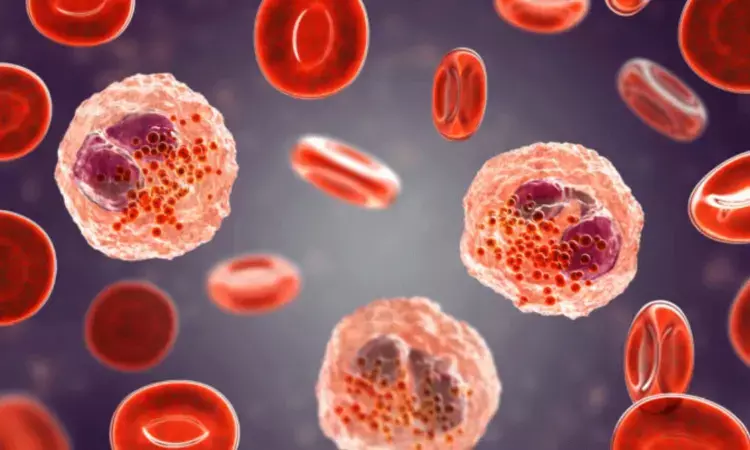- Home
- Medical news & Guidelines
- Anesthesiology
- Cardiology and CTVS
- Critical Care
- Dentistry
- Dermatology
- Diabetes and Endocrinology
- ENT
- Gastroenterology
- Medicine
- Nephrology
- Neurology
- Obstretics-Gynaecology
- Oncology
- Ophthalmology
- Orthopaedics
- Pediatrics-Neonatology
- Psychiatry
- Pulmonology
- Radiology
- Surgery
- Urology
- Laboratory Medicine
- Diet
- Nursing
- Paramedical
- Physiotherapy
- Health news
- Fact Check
- Bone Health Fact Check
- Brain Health Fact Check
- Cancer Related Fact Check
- Child Care Fact Check
- Dental and oral health fact check
- Diabetes and metabolic health fact check
- Diet and Nutrition Fact Check
- Eye and ENT Care Fact Check
- Fitness fact check
- Gut health fact check
- Heart health fact check
- Kidney health fact check
- Medical education fact check
- Men's health fact check
- Respiratory fact check
- Skin and hair care fact check
- Vaccine and Immunization fact check
- Women's health fact check
- AYUSH
- State News
- Andaman and Nicobar Islands
- Andhra Pradesh
- Arunachal Pradesh
- Assam
- Bihar
- Chandigarh
- Chattisgarh
- Dadra and Nagar Haveli
- Daman and Diu
- Delhi
- Goa
- Gujarat
- Haryana
- Himachal Pradesh
- Jammu & Kashmir
- Jharkhand
- Karnataka
- Kerala
- Ladakh
- Lakshadweep
- Madhya Pradesh
- Maharashtra
- Manipur
- Meghalaya
- Mizoram
- Nagaland
- Odisha
- Puducherry
- Punjab
- Rajasthan
- Sikkim
- Tamil Nadu
- Telangana
- Tripura
- Uttar Pradesh
- Uttrakhand
- West Bengal
- Medical Education
- Industry
Eosinophil to platelet ratio can predict acute exacerbation of COPD

In a recent study published in the International Journal of Chronic Obstructive Pulmonary Disease identified eosinophil to platelet ratio (EPR) as a potential predictor of adverse events in patients experiencing acute exacerbation of chronic obstructive pulmonary disease (AECOPD).
A comprehensive retrospective was conducted at Dalian Municipal Friendship Hospital with the analysis of records that spanned from January 2018 to December 2020 and included a total of 508 patients (316 male, 192 female) with AECOPD. The key goal was to establish a correlation between clinical characteristics and EPR with a cutoff value of 0.755.
The results from the study highlighted the effectiveness of the EPR in patients of two groups with significantly different mortality rates (25.3% vs. 5.5%, P < 0.001) when the optimal area under the curve (AUC) cutoff of 0.755 was applied. The patients presenting in the emergency room with a lower EPR also expressed a higher mortality risk (35.6% vs. 11.1%, P < 0.001).
The research went a step further to develop a predictive model for death risk that included variables such as EPR < 0.755, exacerbation history, PaO2 < 60mmHg, PaCO2 > 50 mm Hg, hypoalbuminemia and age over 80 years. This comprehensive model demonstrated better performance in forecasting adverse outcomes for patients during severe COPD exacerbation.
These findings hold promise in transforming the assessment and management of COPD patients, particularly in emergency scenarios. The ability to predict outcomes based on the EPR offers clinicians a valuable tool to tailor interventions and improve patient care. This research outcomes contribute to a better understanding of AECOPD and further can opens avenues for more targeted and personalized approaches in emergency settings.
Source:
Hu, D., Huang, J., Zhao, W., Xu, M., Ma, Y., Gong, Z., Zhang, Q., & Zhao, H. (2024). A low eosinophil to platelet ratio as a worse prognostic index for emergency department attendance in acute exacerbation of COPD. International Journal of Chronic Obstructive Pulmonary Disease, 19, 139–147. https://doi.org/10.2147/copd.s442715
Neuroscience Masters graduate
Jacinthlyn Sylvia, a Neuroscience Master's graduate from Chennai has worked extensively in deciphering the neurobiology of cognition and motor control in aging. She also has spread-out exposure to Neurosurgery from her Bachelor’s. She is currently involved in active Neuro-Oncology research. She is an upcoming neuroscientist with a fiery passion for writing. Her news cover at Medical Dialogues feature recent discoveries and updates from the healthcare and biomedical research fields. She can be reached at editorial@medicaldialogues.in
Dr Kamal Kant Kohli-MBBS, DTCD- a chest specialist with more than 30 years of practice and a flair for writing clinical articles, Dr Kamal Kant Kohli joined Medical Dialogues as a Chief Editor of Medical News. Besides writing articles, as an editor, he proofreads and verifies all the medical content published on Medical Dialogues including those coming from journals, studies,medical conferences,guidelines etc. Email: drkohli@medicaldialogues.in. Contact no. 011-43720751


